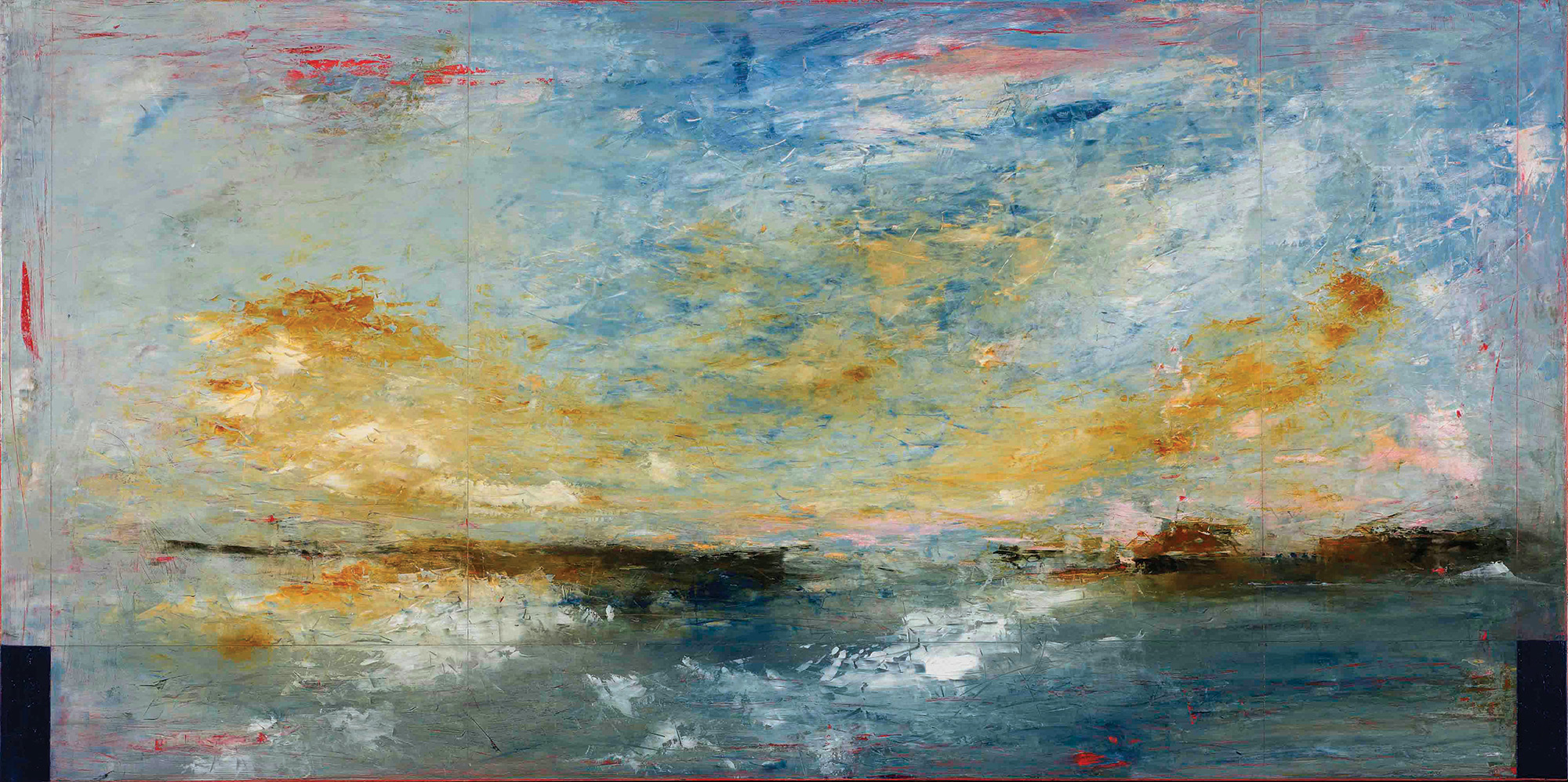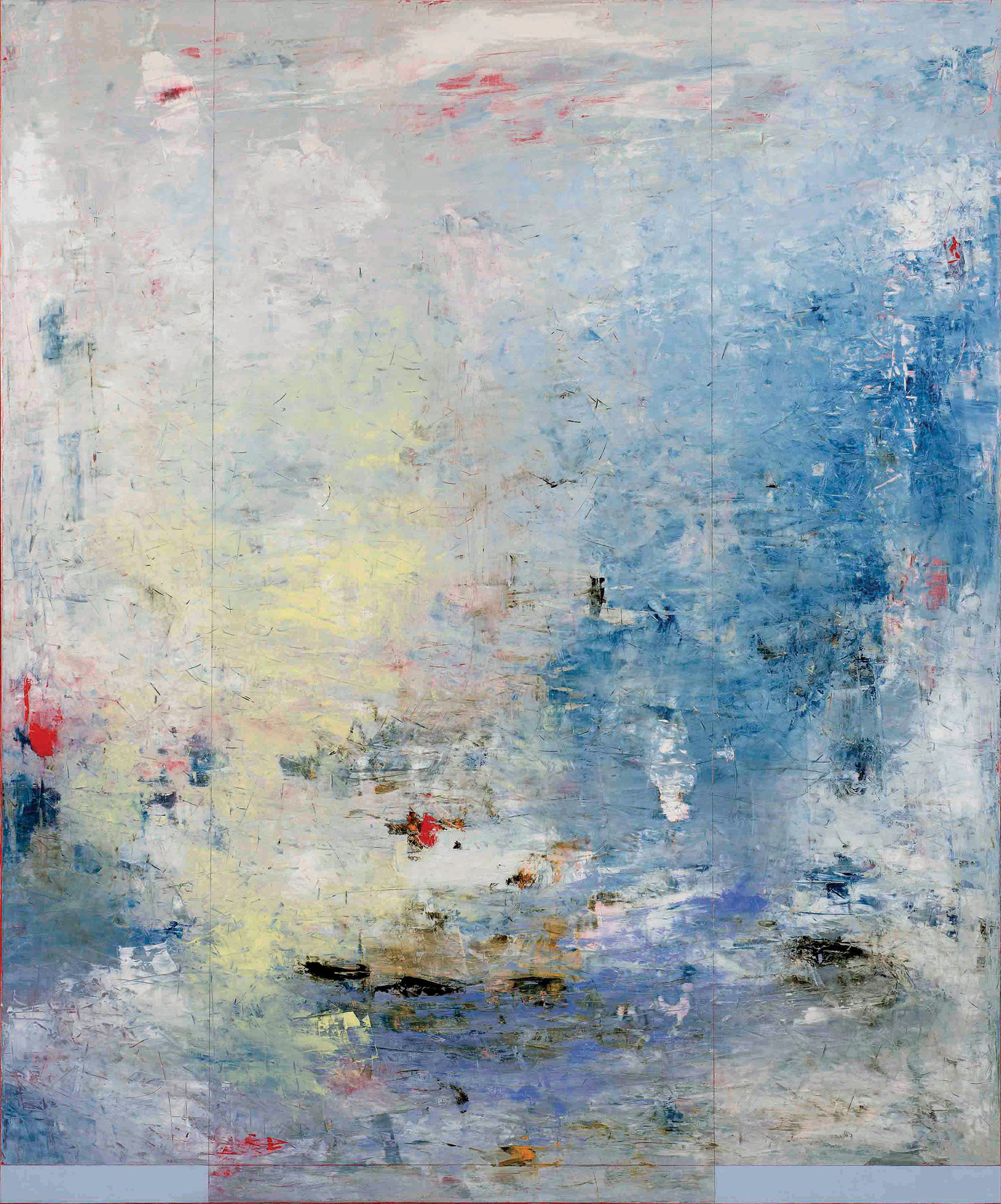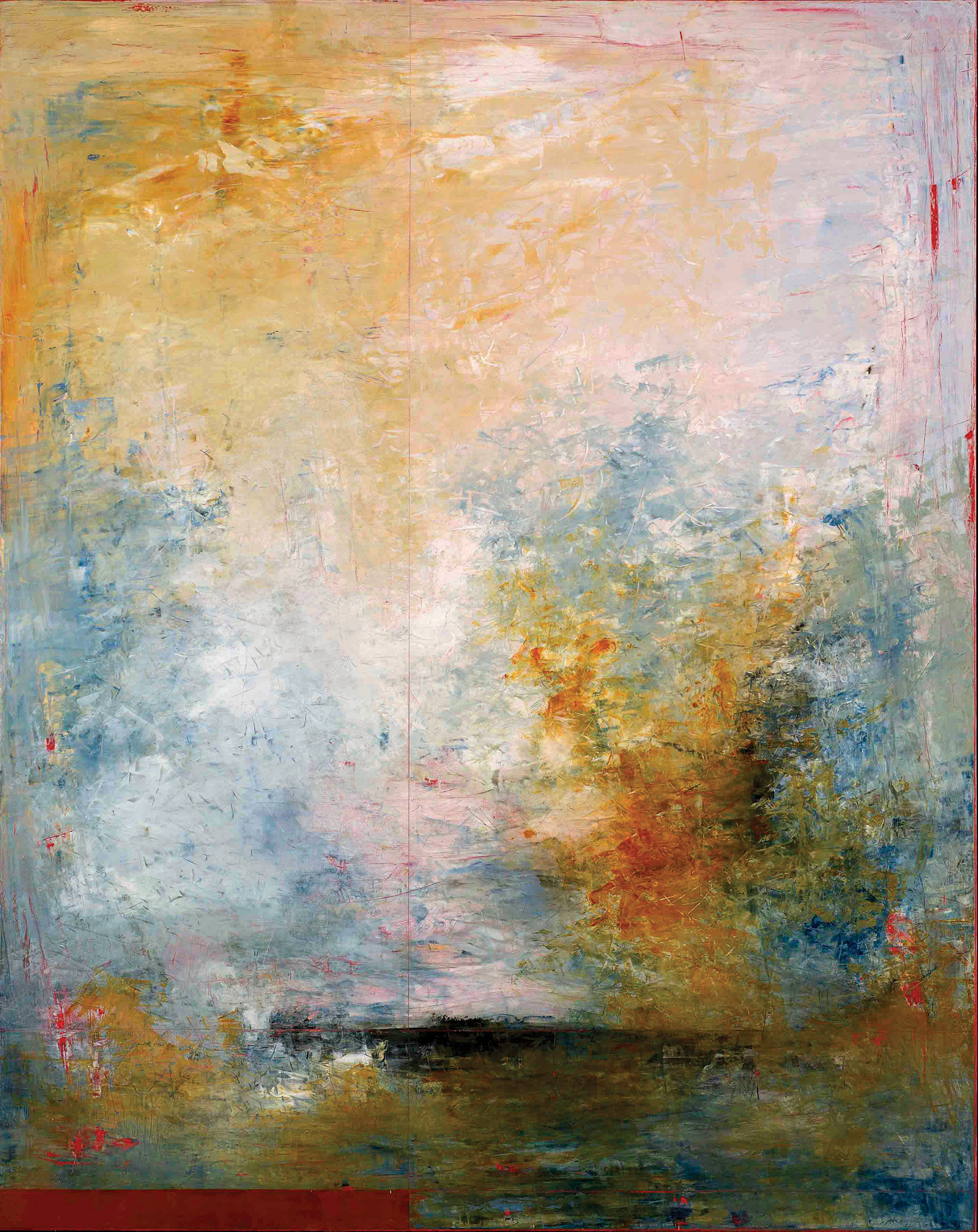
13 Sep Illuminations: Ones to watch
Peter Burega’s paintings, thick with layers scraped and added, offer a spot to land upon and another place to fly from. The motion within the work is constant. He uses aspects of sky and clouds, water and earth, that when combined is like catching fireflies in a mason jar — frantic, beautiful, fantastical and serene.
“Sometimes I think of myself as a landscape artist and sometimes as an abstract artist,” Burega says. “There’s a real subconscious aspect to my work. Part of my process is to allow myself to subconsciously integrate all these different images and ideas.”
Since travel enters into Burega’s work, the photographs he takes become the basis for his compositions, although the end result may be a combination of places, cities and clouds.
“I’m photographing incredibly diverse environments,” he says. “Lately, my work has this very expansive quality — big giant landscapes, water meets air — but lately land has been figuring in as well.”
Burega’s work is more about the removal of paint rather than the addition of it, which is why he uses board instead of canvas. During the course of one painting, Burega adds and subtracts up to 100 layers. “I don’t use brushes, I paint with scrapers and steel trowels and sandpaper,” Burega says. “I remove more paint than I add to the board. At some point, I meld them for a single composition.” His sense of light comes forward from behind the paint. By scraping away the surface to the underpainting, there is a sense of discovery — of finding the thing no one knew was there.
Geometry plays an important role in his work as well. He scores his boards to create a grid, but he doesn’t use the grid to determine where to paint, instead he uses it as a point of reference.
“It’s like framing the image for me,” he says. “Placing control over the chaos — it’s a metaphor for how I paint. I take specific images, which are very controlled. Then my painting and scraping and removing paint is more chaotic because I let mistakes happen. It took me a long time to accept that.”
Currently, Burega is working on a series that involves Mexico, Tokyo’s nighttime lights and the clouds of the Caribbean. Using a multitude of photographs taken in these places, Burega references them within the work.
“I might concentrate on the cloud shots and do something more ethereal, add cityscapes that have more edge, then I’ll go back to the aspect of water,” he says. “My paintings may seem like pretty images, but they’re not — they’re emotional self-portraits. Some are over-energetic, so I throw in some squares, a place holder for the viewer to hold their intension.”
Nathan Klein, owner of SmithKlein Gallery in Boulder, Colorado, represents Burega’s work. Both he and his wife, Ann, fell in love with the thickly painted abstract pieces.
“Having grown up in the art world, it’s an instant emotional reaction for me,” Klein says. “It took an instant to appreciate his work. It’s been interesting to see if our clients, who don’t usually buy abstract art, will be attracted to Peter’s paintings. It’s the way he incorporates the simple element of landscape that allows the viewer to access the abstract nature of the work.”
In addition to SmithKlein Gallery, Burega’s work is represented by Hunter Kirkland Contemporary in Santa Fe, New Mexico; Pryor Fine Arts in Atlanta, Georgia; Craighead Green Gallery in Dallas, Texas; New River Fine Art in Fort Lauderdale, Florida; and Jules Place Art Gallery in Boston, Massachusetts.
- “Under a Moonlit Sky, No. 6” | Oil on Panel | 60 x 50 inches | Photos: James Hart Photography
- “Sierra Madre, No. 4” | Oil on Panel | 60 x 48 inches | Photos: James Hart Photography








No Comments